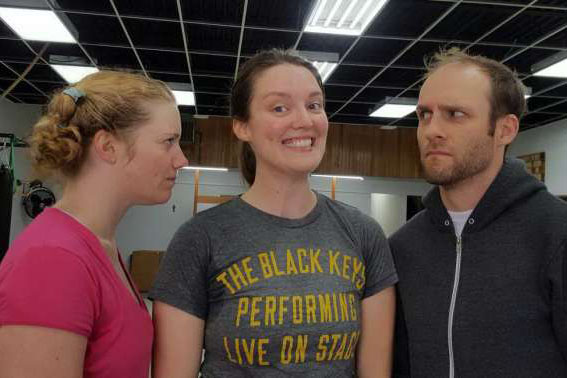This week, I’ve been thinking about communication challenges.
My friend Brandon is a successful concept artist for the video gaming industry. In his off hours he works to create art that is detailed and technically innovative. He recently repositioned his career to instructing, educating and motivating art students to improve their drawing skills & techniques. Although the content that he teaches is very different from my work as a kettlebell instructor, a recent discussion revealed we share the same challenge as teachers & leaders: how to communicate with an individual to help them understand and achieve their goals.
I can snatch a 16kg kettlebell with excellent form, and Brandon can draw the human body beautifully in motion with correct proportions. Unfortunately, this doesn’t necessarily make us great teachers. Teaching is about identifying the correct style of communication each student or client needs.
When I teach a class, I’m managing a team of (let’s say) 10 people. I need to communicate with 10 people who have 10 different world-views and 10 different learning styles.
Some of them thrive when I give clear & precise directions. With them, I work hard to use technical language without jargon. Each muscle group is referenced by name, and each movement is quantified. Other folks need praise and attention to feel motivated, to reach them I need to watch carefully to see where they are working hardest and encourage those efforts.
In my class, a lot of students learn by watching the demonstration first, then physically mimicking my movements. To reach them, I demonstrate each move multiple times while speaking the directions through the motions. We may put our weights aside for more complex sequence to learn the safest way to lift, bend and stretch. My friend Megan (editor of this article) learns by asking endless questions, which is often disruptive to the class but has been proven useful for shyer students. Some people are hesitant to speaking up; for those folks I engage in one-on-one conversations after or before class. They can also benefit from private classes, where we can take the time to focus directly on their limitations, strengths and understanding of new movements.
Every now and then I run into a student who is motivated by what I can only call parental disapproval. Somehow the only thing that reaches them seems to be looks of disappointment and my mom voice…
Hey. Just about whatever works right? If you’re a manager anywhere you know you must approach communication in this manner. Or maybe that’s why 90% of your staff look at you like you have a fish bowl over your head.
Some folks need precise and clear direction for holding a proper plank:
- Wrists, under elbows, under shoulders.
- Pull your lats down.
- Send your belly button to your spine and up.
- Keep your glutes tight, tight, TIGHT!
- Hips remain parallel to the floor.
- Pull your knee caps to the ceiling to engage your quads.
- Pull your calfs tight.
- Flex your toes.
- Stay there.
Others need a different approach.
“Have you seen the movie Full Metal Jacket?” I asked.
“Yes…..” Was the response followed with a nervous sideways glance.
“Today I’m Senior Drill Instructor Gunnery Sergeant Hartman and I just called you to attention for an inspection. How much tension do you need to keep your entire body under to keep from peeing out of fear?”
“ All of it.”
“ Perfect.”

